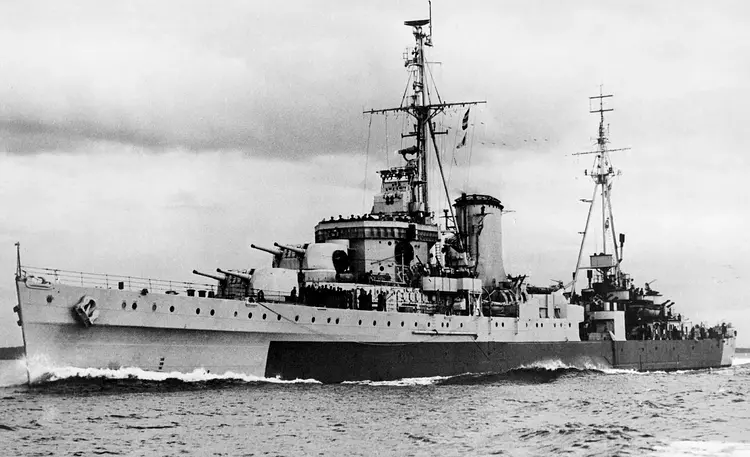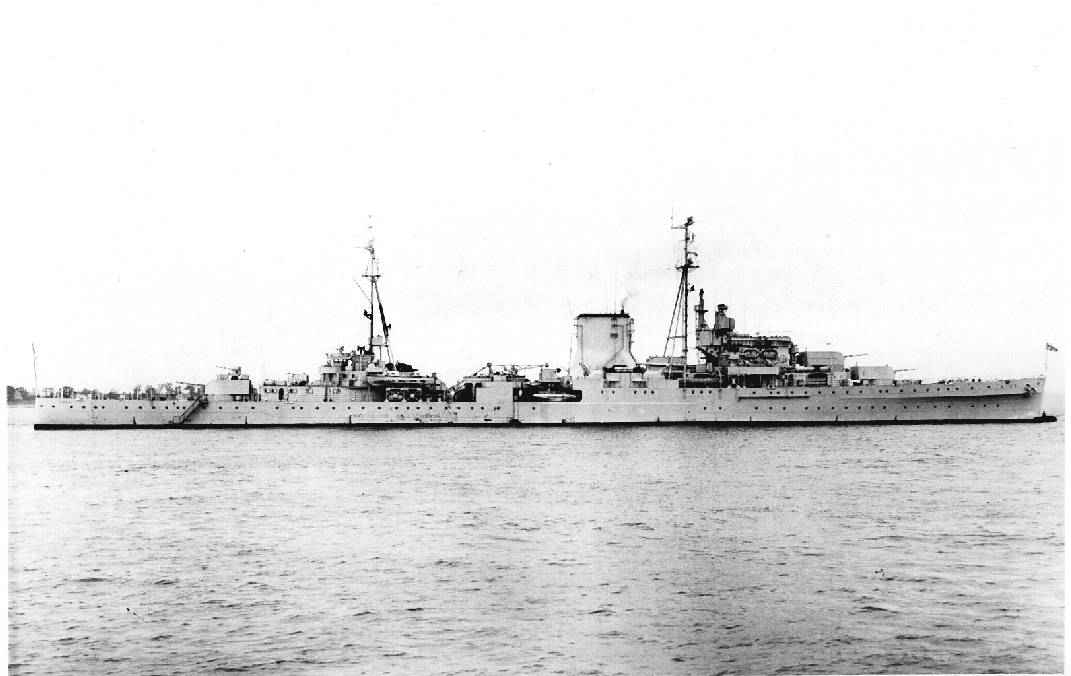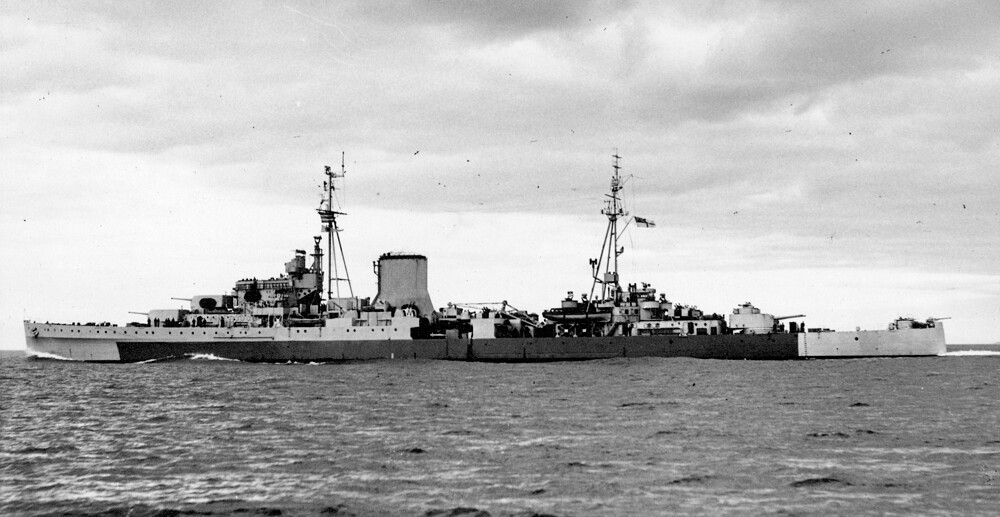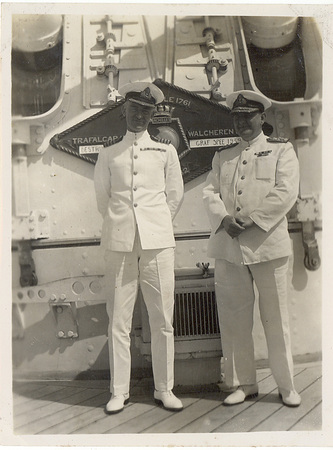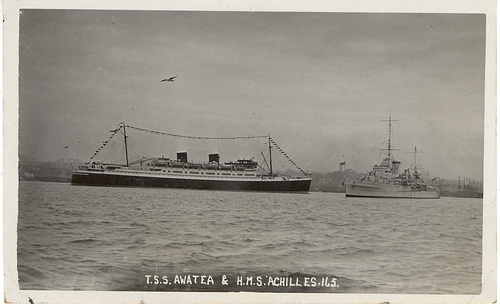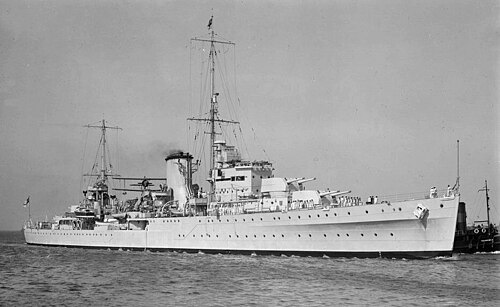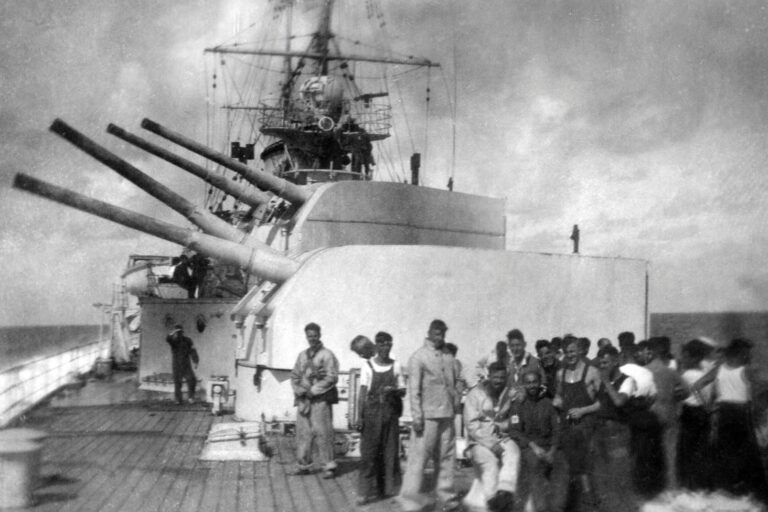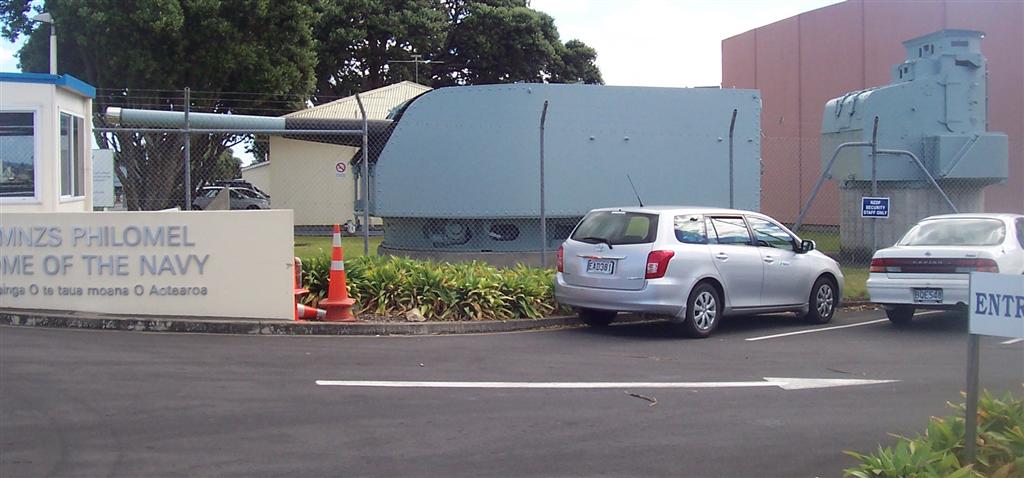- Yes - In the Tech Tree.
- Yes - Event/BP.
- Yes - Premium.
- No - I would not like to see HMNZS Achilles in game.
Description:
HMNZS Achilles was the second Leander class cruiser to be transferred from the Royal Navy to the Royal New Zealand Navy. She served in the RNZN during the Second World War, fighting from the Atlantic to the Pacific theaters.
She served in three Commonwealth Navies during her career, first in the Royal Navy, then the Royal New Zealand Navy, then finally transferring to the Royal Indian Navy. This suggestion was for her 1943 fit while she was serving with the RNZN.
History:
Pre-war:
Built for the Royal Navy as HMS Achilles, she was ordered on the 16th of February 1931, being built by Cammel Laird & Company of Birkenhead, England. She was laid down on the 11th of June 1931. She was launched on the 1st of September 1932 by Lady Stanley, wife of the Parliamentary Secretary for the Admiralty. By the 5th of October 1933, her fitting out was complete, and she commissioned into the Royal Navy.
By the 31st of March 1936, HMS Achilles and her sister Leander would be loaned to the New Zealand Government to replace the older cruisers HMS Diodeme and Dunedin. This would result in her transfer to the New Zealand Division of the Royal Navy. As this was not an independent force, she would keep the HMS Prefix. She left for New Zealand on the 26th of April 1936, sailing through the Mediterranean and multiple Pacific islands, including Panama. She arrived in Auckland on the 6th of September of the same year. About 60% of her crew were New Zealanders during this time.
War service:
Upon the outbreak of war, HMS Achilles left Auckland harbour for Panama, patrolling the west coast of South America for German shipping. She joined the newly created South Atlantic Station based out of the Falkland Islands via the Straits of Magellan on the 20th of October 1939. From this station she conducted more anti-shipping patrols, as well as trade protection duties. It was during this time she partook in the famous Battle of the river plate against the pocket-battleship.
Almost immediately after completing the Battle of the River Plate, HMS Achilles returned to New Zealand waters for escort duties in the South Pacific. During this time, she nearly encountered multiple German Raiders operating in New Zealand waters.
The first of these was on the 13th of June 1940, when HMS Achilles and the Merchant Cruiser HMS Hector arrived in Auckland at the same time as the raider Orion was laying a minefield across the Hauraki gulf (the entrance to Auckland Harbour). This was not the last time that Achilles would almost encounter Orion.
On the 1st of March 1941, she was in the same East Cape area as the Orion and the Tanker Ole Jacob, which had been captured. All of these vessels were heading south at the time. She again had a close encounter with the enemy, another captured vessel, the Adjutant. It must have been within visual distance, as the captured vessel immediately steamed to rejoin her capturer, the raider Komet, off the Chatham Islands.
Upon the creation of the New Zealand Navy in September 1941, all ships within the New Zealand division of the Royal Navy would recommission into the RNZN, gaining the ‘HMNZS’ Prefix. Thus, HMS Achilles became HMNZS Achilles.
With the entry of Japan into the war, the now HMNZS Achilles fell under the control of the US Navies Pacific commander, Admiral Nimitz. More specifically, she fell under South Pacific command. During this time, her service consisted mostly of escort duty for troop convoys between New Zealand and Australia.
In December 1942, she joined the US Navy task forces operating within the Solomon Islands campaign, specifically task force 67. On the 5th of January 1943, this task force had just finished bombarding Munda Island, and was patrolling south of Guadalcanal, when a group of four Japanese aircraft attacked. A bomb from one of these aircraft landed on X turret, destroying it, killing thirteen and injuring eight more.
As the damage done to X turret could not be repaired in NZ, she returned to Britain for repairs and refit. During this refit, the remains of X turret would be removed and replaced by a quad QF-2pdr (Pom-Pom) mount. The single 4" AA mounts would be replaced with dual 4" mounts, doubling her secondary armament. She gained fifteen 40mm bofors guns in single mounts as well as replacing all of her .50 Vickers with 20mm Oerlikons. She also had her Radar modernised to further the AA armament. The completion of this refit was delayed due to an explosion within the dockyard, killing fourteen.
Once these works were completed, she joined the Eastern fleet (later known as the British Pacific fleet) in September 1944, arriving in Auckland in February 1945. Sailing for Sydney on the 26th of April 1945, then on to Manus Island, she joined task force 57 on the 22nd of May 1945. During this time she participated in the bombardment of Truk.
Re-designated task force 37, the British Pacific fleet conducted air strikes on Mainland Japan, with the cruisers acting as escort against Kamikaze attacks.
Post-War:
At the end of the war, HMNZS Achilles visited many Japanese ports, departing in January 1946. She arrived back in Auckland, and conducted numerous visits to NZ ports during this time. She rejoined the Royal Navy, and sailed for Britain on the 17th of July 1946. Paying off on the 17th of September 1946. She was given a Major refit and was sold to the Royal Indian Navy in October 1948 as HMIS Dehli.
When she left Indian service in 1968 to be scrapped, Y turret and a fire director were removed and gifted to the New Zealand Government, where they sit to this day outside the entrance to the Devonport Naval base in Auckland, with the Ships bell on loan to the Auckland War Museum.
| General Characteristics | |||||
|---|---|---|---|---|---|
| Name: HMNZS Achilles | |||||
| Country: New Zealand | |||||
| Type: Light Cruiser | |||||
| Class name: Leander | |||||
| Year of commission: 1941 | |||||
| Refit: 1943 | |||||
| ----------------------------------------------------------------------------------------------------------------------------------------- | |||||
| Dimensions: | |||||
| Length: 554.9 ft (169.1 m) | |||||
| Beam: 56 ft (17 m) | |||||
| Draught: 19.1 ft (5.8 m) | |||||
| Displacement: 9,740t | |||||
| ----------------------------------------------------------------------------------------------------------------------------------------- | |||||
| Propulsion: | |||||
| Powerplant: 6x Oil fired boilers, 4x Geared turbines driving 4 shafts at 72,000 shp (54,000kW) | |||||
| Speed: 32.5kt | |||||
| Endurance: 5,730nmi @ 13kt | |||||
| ----------------------------------------------------------------------------------------------------------------------------------------- | |||||
| Armament & sensors: | |||||
| Compliment: 680 | |||||
| Primary armament: 3x2 BL 6-inch Mk.XXIII on dual mount XXI | |||||
| Secondary armament: 4x2 QF 4-inch Mk.XVI on mount XIX, 1x4 QF-2pdr (pom-pom) | |||||
| Tertiary armament: 15x1 40mm Bofors, 11x1 20mm Oerlikon, 2x4 21" torpedo tubes | |||||
| Sensors: SS1 (mod) surface search radar | |||||
| ----------------------------------------------------------------------------------------------------------------------------------------- | |||||
| Armour: | |||||
| Waterline Belt: 3 in (76 mm) RHA | |||||
| Magazine: 2–3.5 in (51–89 mm) RHA | |||||
| Deck: 1 in (25 mm) RHA | |||||
| Gun turrets: 1 in (25 mm) RHA | |||||
| Bulkheads: 1in (25mm) RHA |
Sources
https://navymuseum.co.nz/explore/by-collections/ships/achilles/
HMNZS Achilles - Wikipedia
https://www.worldnavalships.com/forums/thread.php?threadid=11484 (picture source)
New Zealand Radar Development in World War 2
ADM 220/1644 - Report of R.C.M. Trials, Tantallon, January-July 1944,
Australian and New Zealand Warships 1914-1945, pp 282-284
HMS Achilles - Prelude to Battle — National Museum of the Royal New Zealand Navy
HMNZS Achilles (70) of the Royal New Zealand Navy - New Zealand Light cruiser of the Leander class - Allied Warships of WWII - uboat.net
